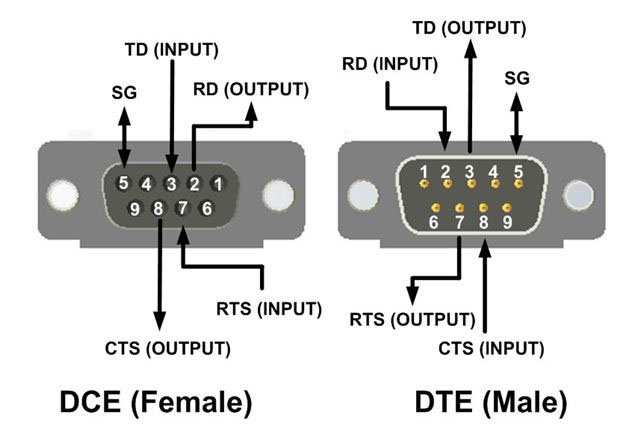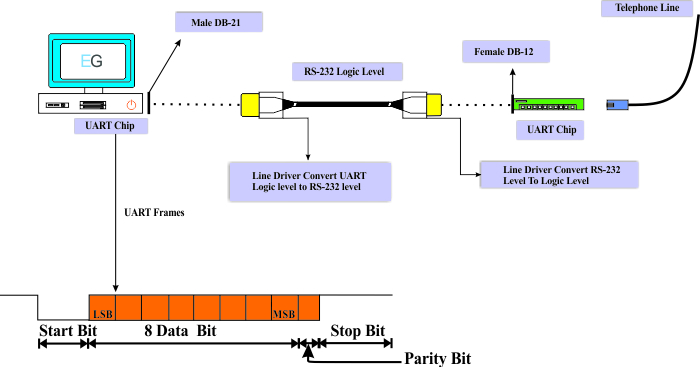
What is RS232 Serial Communication Protocol?
1. Definition and Overview of RS232 Protocol
RS232 is a standard protocol used in telecommunications for serial data communication. It facilitates the connection between Data Terminal Equipment (DTE) such as routers, file servers, and application servers like modems. The protocol specifies the electrical characteristics, signal timings, and physical connectors' details. Primarily employed in computer ports, RS232 supports both serial and parallel communication methods.
2. Historical Development of RS232 Protocol
Initially introduced for connecting modems and terminals in early computer systems, RS232 has evolved into a widely adopted standard for serial communication. Its design emphasizes simplicity and reliability, making it suitable for various applications in the industry. Over time, RS232 has established itself as a fundamental protocol for establishing communication links between different devices.

How RS232 Serial Communication Works
1. Working Principle of RS232 Protocol
RS232 operates by transmitting data in a serial manner, utilizing a start bit with a logic 0 or +12 volts to indicate the beginning of a data frame. This is followed by the actual data bits, parity bit for error-checking, and stop bits to signal the end of the transmission. The consistent voltage levels ensure reliable communication between devices in a point-to-point or multi-point configuration.
2. Data Transmission Process in RS232 Communication
In RS232 communication, data is sent sequentially bit by bit, allowing for efficient transmission over long distances. The protocol dictates the timing and voltage levels for sending and receiving data, ensuring compatibility among different devices. By adhering to these standards, RS232 enables seamless data exchange between various equipment, contributing to its widespread use in diverse applications.

Specifications of RS232 Protocol
1. Electrical Features and Signal Timings
– RS232 uses a start bit with logic 0 or +12 volts for data framing.- It includes data bits, a parity bit for error-checking, and stop bits.- Consistent voltage levels ensure reliable point-to-point or multi-point communication.
2. Physical Connectors and Size in RS232 Standard
– RS232 commonly uses DB-9 or DB-25 connectors for serial communication.- These connectors are compact in size, facilitating integration in various devices.- The physical standardization allows for easy connectivity and compatibility among different equipment.

Applications of RS232 Protocol
1. Utilization in Computer Ports
– RS232 protocol is commonly used in computer ports for communication with various peripherals like printers, scanners, and external storage devices.- The protocol's simplicity and reliability make it suitable for connecting these devices to computers.- Through RS232, data transfer between the computer and peripherals can be efficiently managed.
2. Role in Connecting Data Terminal Equipment (DTE)
– RS232 plays a crucial role in connecting Data Terminal Equipment (DTE) such as modems, routers, and servers for data transmission.- It ensures a standardized method of communication between different types of equipment.- RS232 enables seamless connectivity and effective data exchange within a network.

Advantages and Disadvantages of RS232 Protocol
1. Benefits of Using RS232 Communication
– RS232 protocol offers simplicity and reliability, making it ideal for connecting peripherals like printers and scanners to computers efficiently.- It allows for standardized communication between different equipment, ensuring seamless connectivity within a network.- RS232 facilitates effective data transfer between Data Terminal Equipment (DTE) such as modems and routers, enhancing overall data transmission processes.
2. Limitations and Challenges of RS232 Standard
– RS232's slower data transfer rate compared to parallel communication can be a limitation when high-speed data transmission is required.- The limited distance range of RS232 connections may pose challenges in larger network setups.- Compatibility issues with modern devices that predominantly use USB connections can be a drawback when integrating RS232 protocol into advanced systems.